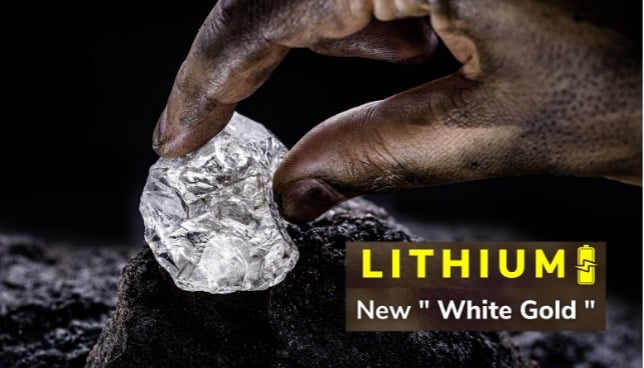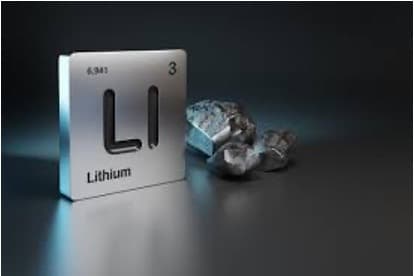The idea that there’s lithium out there in the Pilbara seems reasonably likely to be true. That is where we found vast mountains of near pure iron ore (what China’s been running off for a couple of decades) that Rio Tinto, Fortescue and so on are shipping. Who know what else God’s Engineer put out there? Well, a number of people are claiming to have found lithium there.
This wouldn’t be a great surprise to be honest. The mineral desired is spodumene which is found in pegmatites. There’re a lot of pegmatites out there. Not all pegmatites contain spodumene, not all spodumene contains lithium but having the right type of rock is sure a good start.
It’s also true that some potential miners are claiming they’ve got chips of lithium containing spodumene from their pegmatites – again a good sign. The work to check whether this is going to mean economic quantities, amounts that are worth mining, well, this requires more research as the phrase goes.

Lithium is not a rare element
So far so normal in mining. Except I’d make two further comments. One is about lithium itself. It’s not a rare element. There’s a shortage of people currently licenced to extract from decent places, that’s true, but that’s something solvable. It’s only really in the last three or four years that people have really taken trying to find more seriously. And once people really go looking it seems to turn up everywhere. In the feeds of German and Californian geothermal power stations, under Cornwall, in Cornwall as well, those vast salt deserts in South America, Zimbabwe, and, of course, as we’re discussing here, Pilbara in Australia. My view is that potential lithium supply is going to get well ahead of demand and the lithium price will slide – gently perhaps – back to about the cost of extracting it.
This won’t mean there’s no profit in it, it’ll just mean that the profit comes from the capital and effort applied to extraction. The scarcity value of having a deposit worth mining will disappear. Or, at least, as with David Ricardo on rent itself, the marginal deposit still worth exploiting will make only that “effort” profit, not a scarcity one, while richer deposits will still make money out of the minerals themselves being so rich. That current vast premium for having mineable lithium is going to disappear – I somewhere between think and insist.
Lithium exploration
What really interests about this Pilbara lithium exploration is the way that it’s feeding off itself. Azure Minerals (ASX: AZS) is claiming good lithium prospects at Andover. From what anyone really knows, they’re probably right too. Which is fine. Errawarra Resources (ASX: ERW) is some 10 miles away and says that it’s got pegmatites. Note, so far, just the right kind of rock. The share price jumped 100% on one such claim. Then there’s Raiden Resources (ASX: RDN), at “Andover South” a few more km away who claim much the same. Oh, and Artemis Resources (LON: ARV) which is over just a bit more. Greentech Metals (ASX: GRE) jumped 350% on reporting lithium containing rock chips. Which seems a bit previous but there we are. Oh, of course, in this Pilbara region.

You can see how this might be running. Those guys next door have a lovely deposit, so we do too. And if we are claiming a lovely richness, then the guy the next but over, further away, will too. And if you read through the corporate announcements of these varied would be miners that is how it reads sometimes. We’re close to Raiden who are near Greentech who are next to Azure – and then, to complete the circle, all we’ll need is Azure stating they’re near Errawarra. If we were being cynical we’d say it’s like dotcom, where nascent companies did deals with each other and stock prices tripled every time they did.
The thing is this is a possible reading of this. And it’s also a possibly entirely wrong reading of this. For what is there actually is some vast field of lithium containing spodumene in the pegmatites of the Pilbara around Andover? All the results from the varied exploration programmes would be exactly as they are. So too would be the implications of each find for the next field over.
Investing in junior and exploration miners
And that’s the point to make here. Yes, there are frenzies in mining – just like in dotcom – and the Australian nickel boom of the 1960s is one example. There are also vast finds that spread across companies and tenements – the iron ore of the Pilbara. Distinguishing between the two at the early stage is difficult. But it’s also essential if we’re not to be taken in by promoters and instead only invest in viable prospects.
And there in lies the problem in investing in junior and exploration miners. At the stage of imperfect and partial information we just can’t know. Which is, of course, the reason we’re funding those companies with our capital – so they can do the exploration to find out.